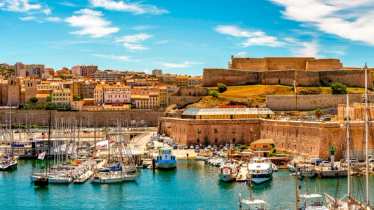
- Destinations
- Marseille
Marseille city breaks
Holidays in Marseille tick every box, whether you’re sampling the food scene, seeing the sights, or basking on a sunny beach.

Planning your trip to Marseille
Dreaming of holidays in the South of France? Don’t underestimate Marseille. France’s vibrant second city has effortless charisma, combining history and cutting-edge culture with a restlessly inventive food scene. As befits an ancient port, it’s cosmopolitan and sometimes chaotic – and the place to try a proper bouillabaisse, if you know where to head. Slow the pace with afternoons at the beach, or swim in the Calanques’ turquoise inlets.
You can reach Avignon, Valence, Marseille or Aix-en-Provence by catching a connecting TGV INOUI train in Brussels, Lille or Paris. To find out more, visit our connections page.
Exploring the city
Marseille is packed with things to see and do, so draw up your itinerary and book attraction tickets with Musement. In busier places, watch out for opportunist bag or phone thieves: as with any big city, always use your common sense and be aware of your surroundings.
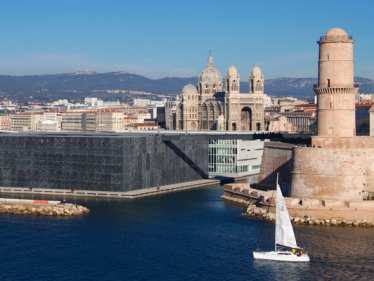
The best museums
The Mucem is a must, housed in architect Rudy Ricciotti’s bold seafront cube. Inside, it explores Mediterranean civilisations via its eclectic collections, which run from magic talismans to casts of Edith Piaf’s hands. Outside, behind its filigree façade, don’t miss the walkways that lead up to the sea-facing roof. Otherwise take your pick from the city’s museums, which are generally free to visit. Château Borély showcases decorative arts in a stately, park-framed pile, while the elegant Musée Cantini is a who’s-who of modern art, from Miróto Matisse. The handsome Palais Longchamp houses the Natural History Museum, and has post-visit gardens and playgrounds to explore.
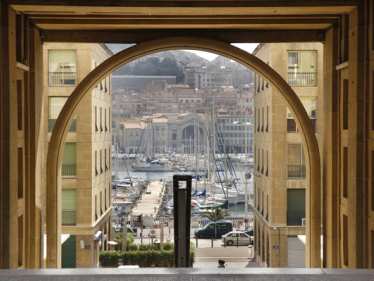
The Vieux-Port and Le Panier
At the heart of the city since ancient times, the Vieux-Port thrums with life. Fishermen sell their catch on the quayside each morning, while visitors gaze up at the mirrored canopy designed by Foster + Partners. Brasseries and cafés edge the harbour, which is crossed by two small ferries – a three-minute, 50-cent trip. Neighbouring Le Panier is the city’s oldest quarter: a warren of narrow streets and graffiti-scrawled stairs, clinging to a trio of hills (flat shoes, if you’re wondering, are a must). Below street-strung washing lines, it’s a maze of arty cafés, small shops and sun-baked squares, best explored with an artisanal ice-cream from Vanille Noire.
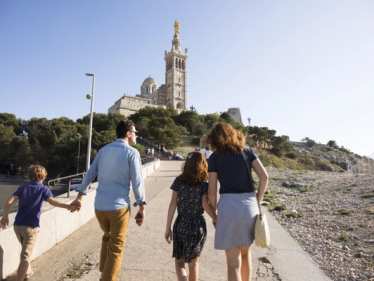
Sights and attractions
You can’t miss La Bonne Mère – the hilltop basilica of Notre-Dame de la Garde, said to protect the city and its sailors. Amid its marble, murals and gold leaf don’t miss the ex-votos: paintings and model ships from grateful locals saved at sea or spared from sickness. The Vieux Port is also guarded by two forts, Saint-Nicolas and Saint-Jean; the latter’s ramparts and gardens are free to visit, with a footbridge across to the Mucem. Close by is Cosquer Méditerranée, which recreates the Cosquer cave and its spine-tingling prehistoric paintings. Alternatively, hop on a boat trip to the Château d’If, the brooding fortress-turned-prison where Dumas set The Count of Monte Cristo.
Things to do in Marseille
Once you’ve seen the main museums and sights, explore a different facet of the city. Tap into its buzzing cultural scene, explore an architectural icon, or hit the great outdoors – there are beaches to discover, cliffs to climb, and some spectacular hikes.
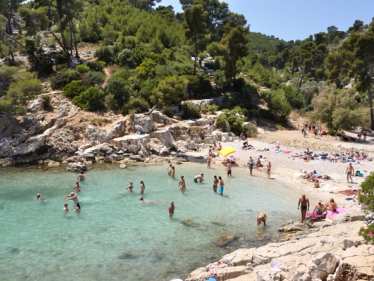
The beaches and Calanques
The closest stretch of sand is Plage des Catalans, 20 minutes’ walk – or a short bus ride – from the Vieux-Port. Alternatively, join the locals swimming from the rocks at the fishing village of Malmousque, or people-watch at Plage du Prado. For scenic beauty, nowhere comes close to the Calanques, a series of limestone fjords south of the city, whose turquoise inlets are backed by a rugged national park. Buses drop you at the entrances, then you hike to your chosen spot: Sormiou is beautiful and relatively easy to reach, while En Vau is impossibly pretty. Sugiton has a reservation system to keep numbers down; note, too, that the whole park closes if high winds create a fire risk.
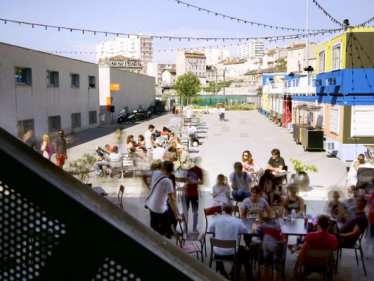
Culture and design
Marseille excels when it comes to the arts. Its art-deco opera house is a beauty, while its national ballet is headed up by cutting-edge trio La(Horde). You can’t miss La Cité Radieuse, Le Corbusier’s visionary ‘vertical garden city’, where tours run by the tourist office take in one of the apartments. (If they’re booked up, you can still explore the rooftop and communal floors.) Summer-only sculpture park La Friche de l'Escalette is set in an abandoned lead mine, while La Friche de la Belle de Mai is open year-round: an old tobacco factory-turned-cultural hub, with exhibitions, concert halls, a skatepark and an epic roof terrace.
Where to Stay in Marseille
Your options run from hostels and aparthotels to stylish seafront retreats, like the couldn’t-be-cooler Tuba Club. Plan your trip from route to room with our Eurostar train and hotel packages. Save time, money and hassle by booking everything in one place.
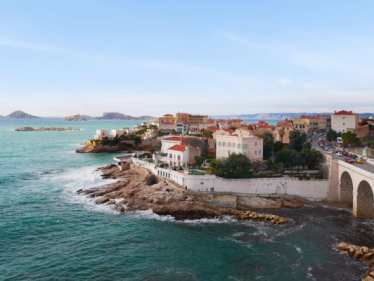
Choosing a neighbourhood
The first of the city’s numbered arrondissements is the Vieux-Port – a vibrant, super-central place to stay. Neighbouring Le Panier is history-steeped and charming. Spanning the hip, restaurant-edged Cours Julien, the 6th district makes for a great base, while families should consider Les Cinq Avenues and the streets near Palais Longchamp, with its park, museums and playgrounds. Along the Corniche coastal road south of the Vieux-Port, seaside charmers include the Vallon des Auffes, where fishing boats bob in the harbour, and the well-heeled, hilly Roucas-Blanc.
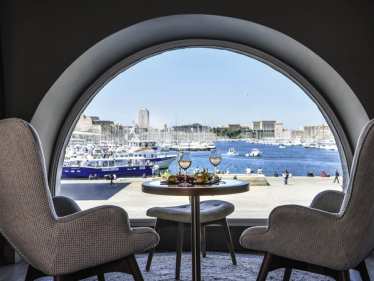
Three standout stays
With its front-row position on the Vieux-Port, the Grand Hôtel Beauvau is the ultimate quayside stay. One of the city’s most historic hotels, it’s been elegantly updated, from its intimate bar to its spacious rooms and suites, many with magnificent sea views. By the Fort Saint-Nicolas, the New Hotel of Marseille – Le Pharo is handy for the port and beach. Its blocky exterior may not get your heart racing, but what lies behind it might: a heated pool; sleek, soundproofed rooms; and top-floor suites with private terraces. Further south, close to Malmousque’s coves, the Mercure Marseille Centre Bompard La Corniche is a peaceful hideaway, set amid leafy grounds and with an outdoor pool.
Where to eat and drink
Make sure you rock up hungry: Marseille’s youthful, creative restaurant scene lives up to the hype. Keen to get your culinary bearings? Book a food tour via Musement, and remember that restaurants are often closed on Sundays and sometimes Mondays.
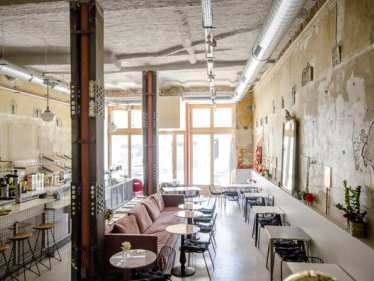
Marseille’s essential eats
Start with dinner at La Mercerie, one of a new wave of cool, produce-focused eateries, or try the cookies and sourdough sandwiches at Pétrin Couchette, its casual next-door offshoot. For a feelgood brunch head to Carlotta With, known for its inventive breads and pastries, or lunch on Caterine’s patio. The set-up is canteen-style but the farm-to-table food is flawless, from beef tataki to harissa-spiked cauliflower beignets. For authentic bouillabaisse or bourride stew, book Le Grand Bar des Goudes, then lean into the food scene’s diversity: don’t miss Libala’s Afro-fusions, Mouné’s modern Lebanese, or Chez Yassine’s Tunisian home-cooking.
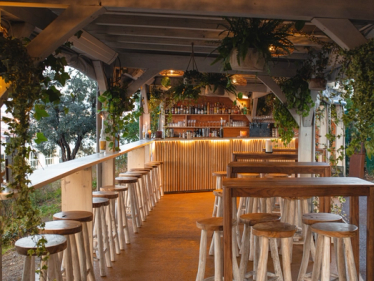
Coffee stops and bars
In a city with a taste for caffeine, Café Lauca is a standout: a tiny coffee bar that roasts its own beans and serves up a superb V60. For more space, head to Ben Mouture or book brunch at Deïa Coffee & Kitchen: briocheperdue with truffled scrambled eggs, perhaps, paired with an iced macchiato. Come apéro hour, enjoy the Vieux-Port views at L’Abbaye, along with a glass of rosé and side of panisse (chickpea fritters). In Saint-Victor, sip ginger juleps at Julis, perched by a leafy garden, or stroll to nearby Boulevard Notre-Dame, where Bar Gaspard and CopperBay are two notable cocktail spots. In search of a more boho, late-night vibe? Cours Julien is the place.
The best time to visit Marseille
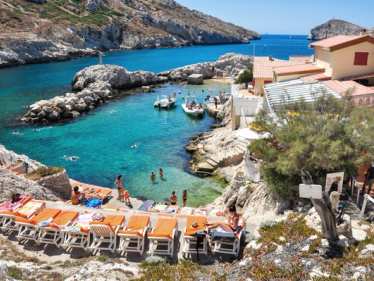
Spring and summer
Come in spring to avoid high summer’s crowds,and enjoy the sunshine: by April, daytime temperatures average 17°C, climbing another three degrees in May. Snack on gariguette strawberries at the market on Cours Julien, or wander the Palais Longchamp’s formal gardens.
Summer is the perfect time to enjoy the beach, boat trips and swims in the Calanques. For a long lunch, retreat to the Baie des Singes, a famous fish restaurant whose loungers line a tiny private cove. From mid-June to early July, the Festival de Marseille is in full swing, while June’s Marsatac is big on rap and electro. In July, a flurry of fireworks greets Bastille Day, and Avignon’s iconic festival is a short train ride away.
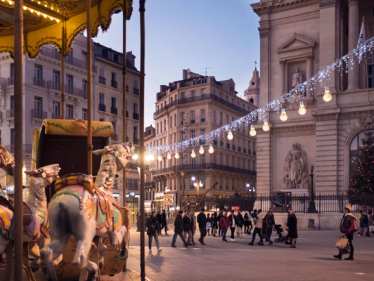
Autumn and winter
Autumn is a great time to visit Marseille; it’s cheaper and way less crowded, but the weather is still pleasant. It’s the perfect season to hike in the Calanques, starting with the scenic walk from Port Miou to the Calanque d’En Vau. Alternatively, head to the other side of Marseille, following wild thyme-edged trails along the Côte Bleue’s limestone cliffs.
Winters are mild in the city, with little rain and plenty of sunshine (not for nothing does Marseille claim to be France’s sunniest city). Towards Christmas, there’s a market on the Canebière and an ice-rink on the esplanade, while the Foire aux Santons sells the little figurines that appear in nativity scenes.
FAQs
During the summer months, (June, July and August) you can travel with Eurostar Sun (formerly Thalys Sun) directly to Marseille from Brussels, Amsterdam or Rotterdam. If you’re travelling outside of summer, you can travel on a direct Eurostar to Paris and change to a TGV train from Paris Gare De Lyon direct to Marseille. To travel from London, take a Eurostar train to Paris or Lille and changing on to a connecting TGV InOui train.
In a word, sunny: they say that the sun shines in Marseille over 300 days a year. Temperatures peak in July, while Indian summers often stretch well into the autumn (though come prepared, as there can be thunderstorms). Winters are generally mild, although the mistral wind can bring a sharp, sudden chill.
Public transport – metro and buses – are best, depositing you at the park’s main entrances. If you’ve got kids in tow, the walk from Callelongue’s port to the Marseilleveyre Calanque is a manageable 45 minutes, while Sugiton’s also straightforward (though you’ll need to make a reservation). Boat tours of the Calanques run from the Vieux-Port, but there’s no drop-off point: some anchor up for an offshore swim, but otherwise you’ll need to stay on board.
The compact city centre is easy to explore on foot or bike; for longer tours along the coast, consider hiring e-bikes. Public transport includes the metro, tram and buses, run by the RTM, which also operates seasonal shuttle boats from the Vieux-Port. Some head north to the fishing village of L’Estaque, others to La Pointe Rouge, where you can hop on a boat to Les Goudes, the gateway to the Calanques National Park.
Absolutely. Its main beaches include sandy Plage des Catalans, a short walk from the Vieux-Port, and the manmade Plages du Prado. The Plage du Prophète’s shallow waters are popular with families, while the Calanques’ secluded coves are harder to reach, but unquestionably worth the hike.
You may also like
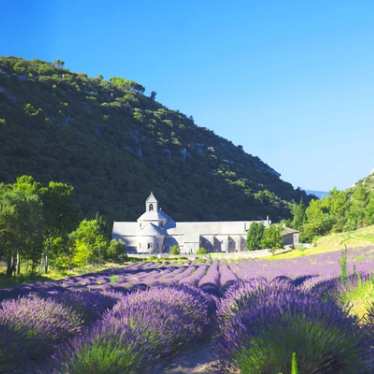
South of France holidays
There's a reason so many artists and celebrities flock to this part of the world. Find out why.
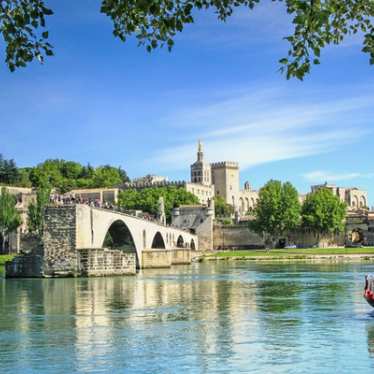
Avignon city breaks
If you love food, culture, sun, wine and sightseeing then look no further.
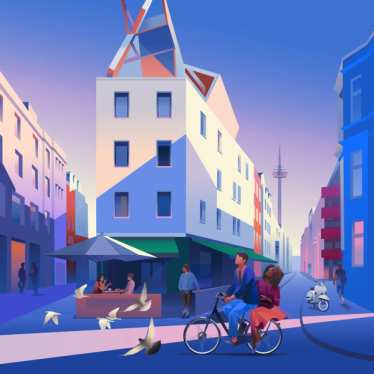
All Eurostar trains
Discover Europe’s best destinations with Eurostar across France, Belgium, the Netherlands, Germany and the UK.





